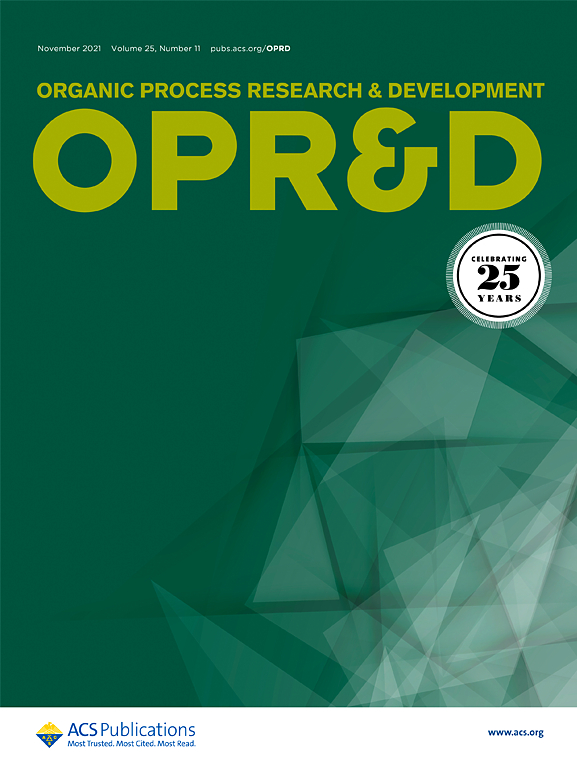An Improved Kilogram-Scale Synthesis of 2-Bromo-4-nitro-1H-imidazole: A Key Building Block of Nitroimidazole Drugs
IF 3.1
3区 化学
Q2 CHEMISTRY, APPLIED
引用次数: 10
Abstract
An efficient two-step method for the synthesis of 2-bromo-4-nitroimidazole, 6, a key building block for nitroimidazole drugs, has been developed. The synthesis involves dibromination of 4-nitroimidazole 10 followed by selective debromination using in situ reductive deiodination strategy. The reactions are facile, safe, and easy to scale up. The large-scale applicability of this improved method was tested by conducting the reactions on kilogram scale to produce the desired product in high yield and quality.

改进的千克级合成2-溴-4-硝基- 1h -咪唑:硝基咪唑类药物的关键组成部分
建立了一种高效的两步法合成硝基咪唑类药物的关键组成部分- 2-溴-4-硝基咪唑6的方法。该合成包括4-硝基咪唑10的二溴化,然后使用原位还原脱碘策略进行选择性脱溴。这些反应简单、安全,而且易于扩大规模。通过在公斤级上进行反应,验证了该方法的大规模适用性,并以高收率和高质量生产出所需的产品。
本文章由计算机程序翻译,如有差异,请以英文原文为准。
求助全文
约1分钟内获得全文
求助全文
来源期刊
CiteScore
6.90
自引率
14.70%
发文量
251
审稿时长
2 months
期刊介绍:
The journal Organic Process Research & Development serves as a communication tool between industrial chemists and chemists working in universities and research institutes. As such, it reports original work from the broad field of industrial process chemistry but also presents academic results that are relevant, or potentially relevant, to industrial applications. Process chemistry is the science that enables the safe, environmentally benign and ultimately economical manufacturing of organic compounds that are required in larger amounts to help address the needs of society. Consequently, the Journal encompasses every aspect of organic chemistry, including all aspects of catalysis, synthetic methodology development and synthetic strategy exploration, but also includes aspects from analytical and solid-state chemistry and chemical engineering, such as work-up tools,process safety, or flow-chemistry. The goal of development and optimization of chemical reactions and processes is their transfer to a larger scale; original work describing such studies and the actual implementation on scale is highly relevant to the journal. However, studies on new developments from either industry, research institutes or academia that have not yet been demonstrated on scale, but where an industrial utility can be expected and where the study has addressed important prerequisites for a scale-up and has given confidence into the reliability and practicality of the chemistry, also serve the mission of OPR&D as a communication tool between the different contributors to the field.

 求助内容:
求助内容: 应助结果提醒方式:
应助结果提醒方式:


